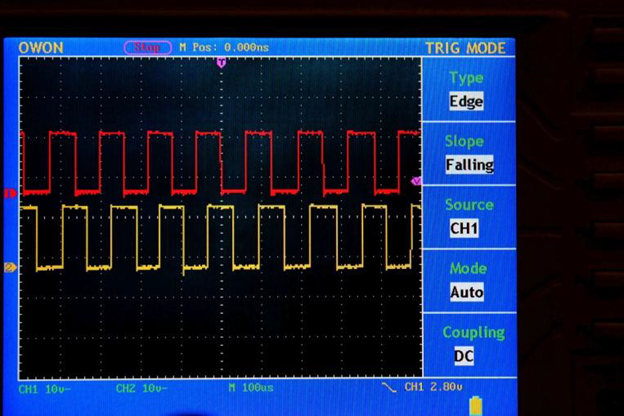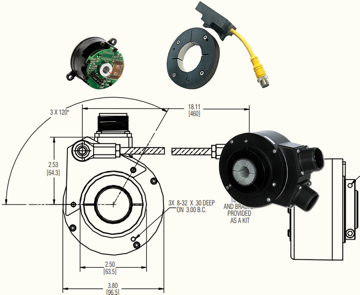If the DLL file is missing, the PulseIQ Software will not be able to connect or open successfully. Ensure that you have Windows 8 or higher and Dtp-ToolBox.dll is placed in the same folder as the Service Tool .exe file.
Why won't PulseIQ Software open?
Posted by London Rhodes on Jul 7, 2022 12:19:49 PM
Topics: Installation, Troubleshooting, HS35iQ Encoder
Why am I unable to connect to PulseIQ Software?
Posted by London Rhodes on Jul 7, 2022 11:13:22 AM
If you experience trouble connecting your driver to PulseIQ Software, the driver may not be installed properly or the connection could be lose. Download and install the proper drivers for your OS at https://ftdichip.com/drivers/vcp-drivers/. Also, check all connections and ensure everything is plugged in properly.
Topics: Installation, Troubleshooting, HS35iQ Encoder
What are the Benefits of Hubshaft Encoders?
Posted by London Rhodes on Feb 2, 2022 8:14:20 AM
Topics: How to Choose An Encoder, Installation
What are the Encoder Mounting Options?
Posted by London Rhodes on Jan 19, 2022 8:14:21 AM
There are several types of encoder mounting styles to choose from when selecting an encoder for your application. Typically, you will choose between hollowshaft, shafted, hubshaft, and ring (or c-faced) mounting styles for encoders. Hollowshaft encoders allow the shaft of the motor to go through the encoder, and secures to the shaft by the shaft collar. Shafted encoders attach to the motor with a flexible coupling or possibly a belt (gear). Hubshaft encoders mount to motor shafts similarly to hollowshaft encoders. The difference in the hubshaft is that the motor shaft can only go about halfway into the encoder rather than completely through. Lastly, the ring (c-faced) option allows the encoder to bolt directly to the flange of the motor for bearingless designs. You will need to choose the mounting style that best suits your motor or application.
Topics: How to Choose An Encoder, Installation, Absolute Encoders, Optical Encoders, Magnetic Encoders
When Should You Use a Coupling to Mount Encoders?
Posted by London Rhodes on Jan 19, 2022 7:44:44 AM
Couplings also allow the encoder to compensate for shaft misalignment. Cutouts on the coupling allow flex to occur in the coupling rather than in the motor shaft. The runout from the shaft is absorbed by the coupling to prevent physical damage to the encoder.
Topics: How to Choose An Encoder, Installation, Troubleshooting
What Are Indications of Good Encoder Output?
Posted by London Rhodes on Sep 29, 2021 1:41:32 PM
Topics: Installation, Encoder Signals Output, Troubleshooting
How Do I Use an Encoder and Measuring Wheel on a Conveyor System?
Posted by London Rhodes on Sep 29, 2021 8:53:21 AM
Dynapar offers a three piece solution for conveyor systems including an encoder, measuring wheel and bracket. A few brackets are specifically designed for use on a conveyor.
Topics: How to Choose An Encoder, Installation, Absolute Encoders
What Should I Consider When Installing an Encoder Tether?
Posted by London Rhodes on Aug 27, 2021 2:10:16 PM
Encoder tethers are designed and engineered to allow the encoder to float with the run-out of the motor shaft. If the tether is bolted too rigidly to the motor, then run-out from the motor can damage the encoder bearings. It is critical to use the parts provided with the encoder during installation to ensure the tether is properly placed. Avoid bending the tether from the position in which it is provided from the factory.
Topics: Installation, Troubleshooting
Why are Tethers Important for Encoders?
Posted by London Rhodes on Aug 27, 2021 2:01:41 PM
Without a functional tether, the wobble from the motor shaft will create additional wear on encoder bearings causing them to fail. Friction from bearing failure will cause encoder electronics to overheat.
Topics: Installation, Troubleshooting
What is an Encoder Tether?
Posted by London Rhodes on Aug 27, 2021 1:59:00 PM
A tether is an anti rotation device mounted between motor and encoder to ensure the encoder remains stationary while the motor is running.
Topics: Installation, Absolute Encoders, Troubleshooting

